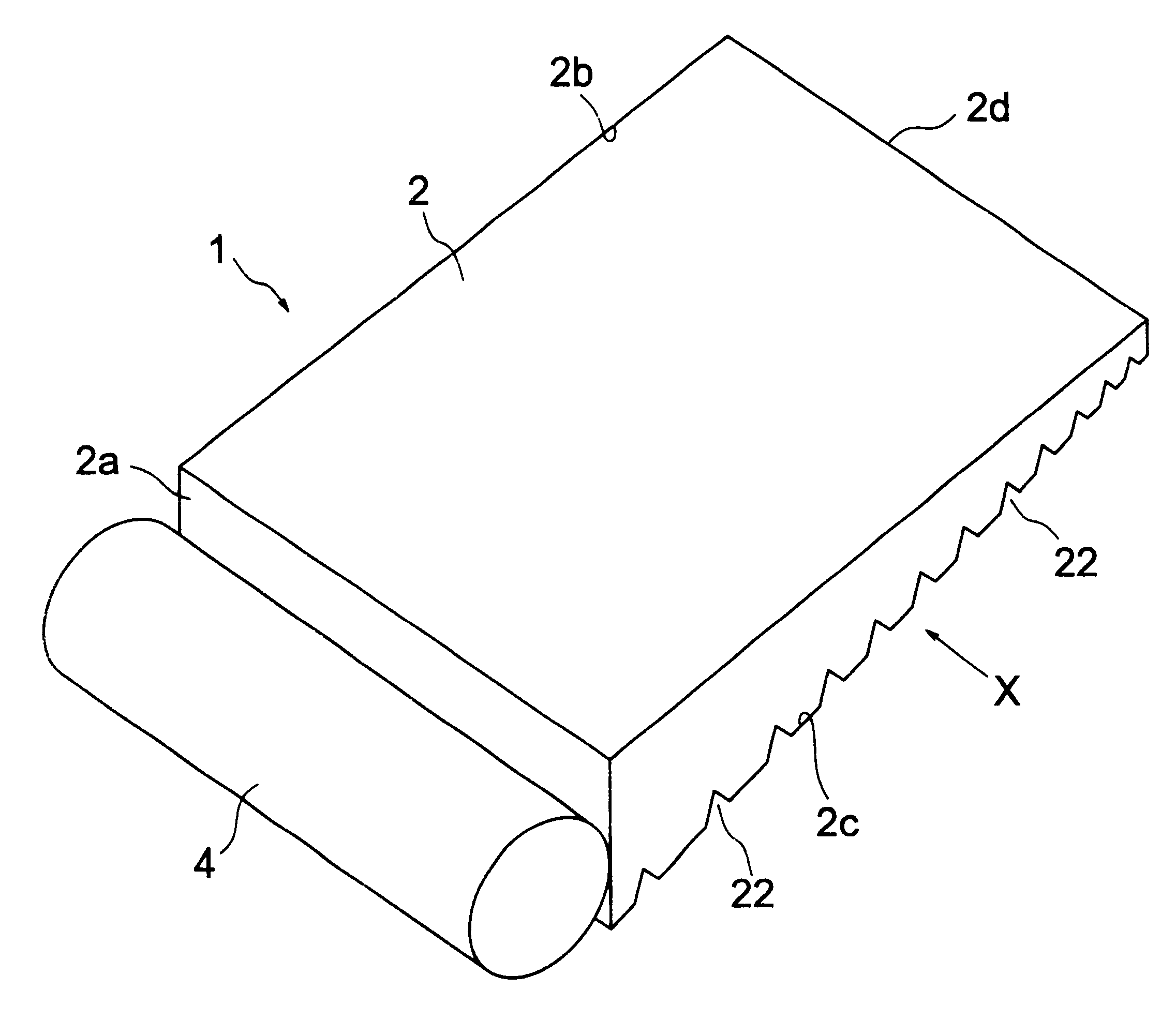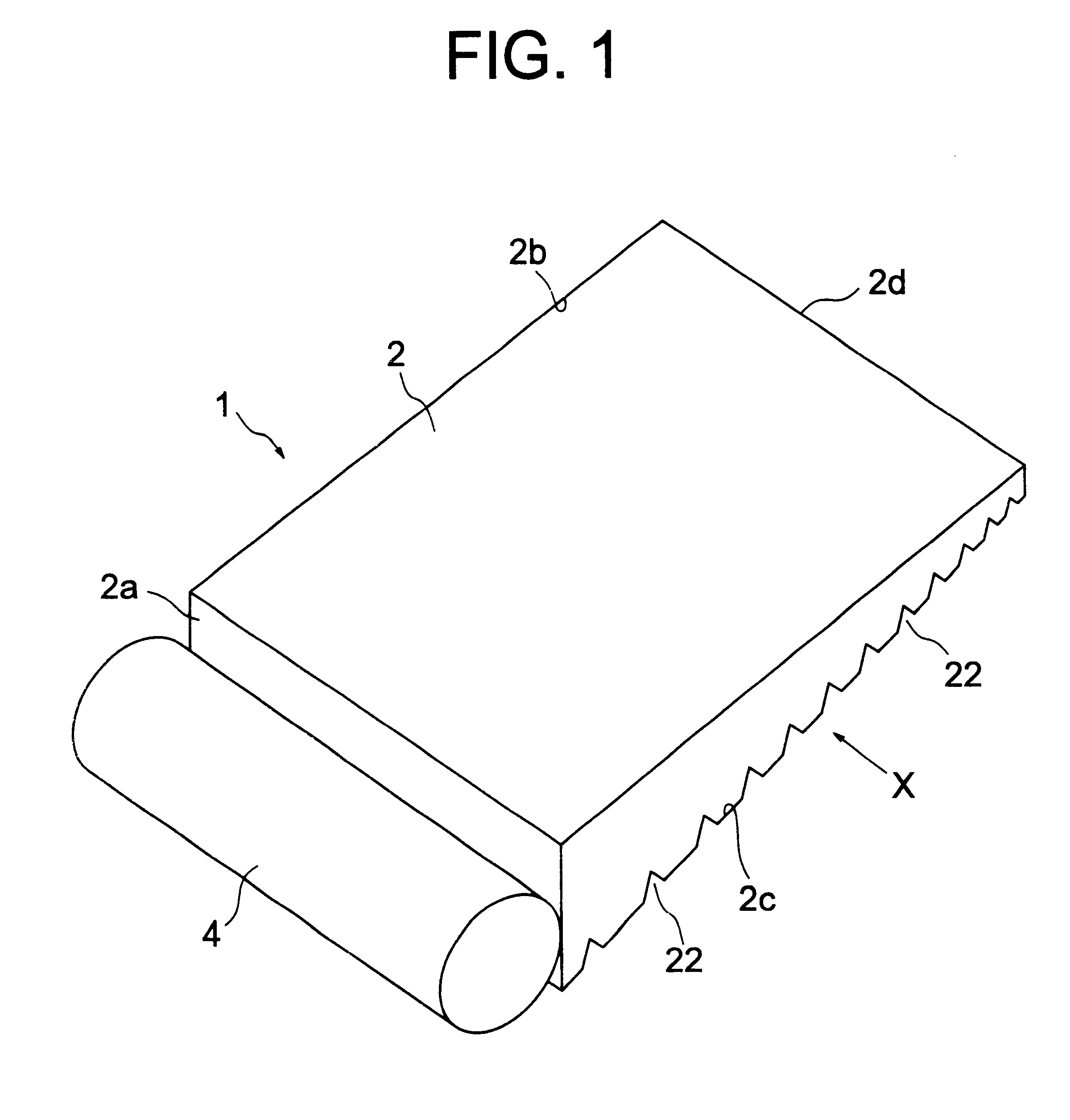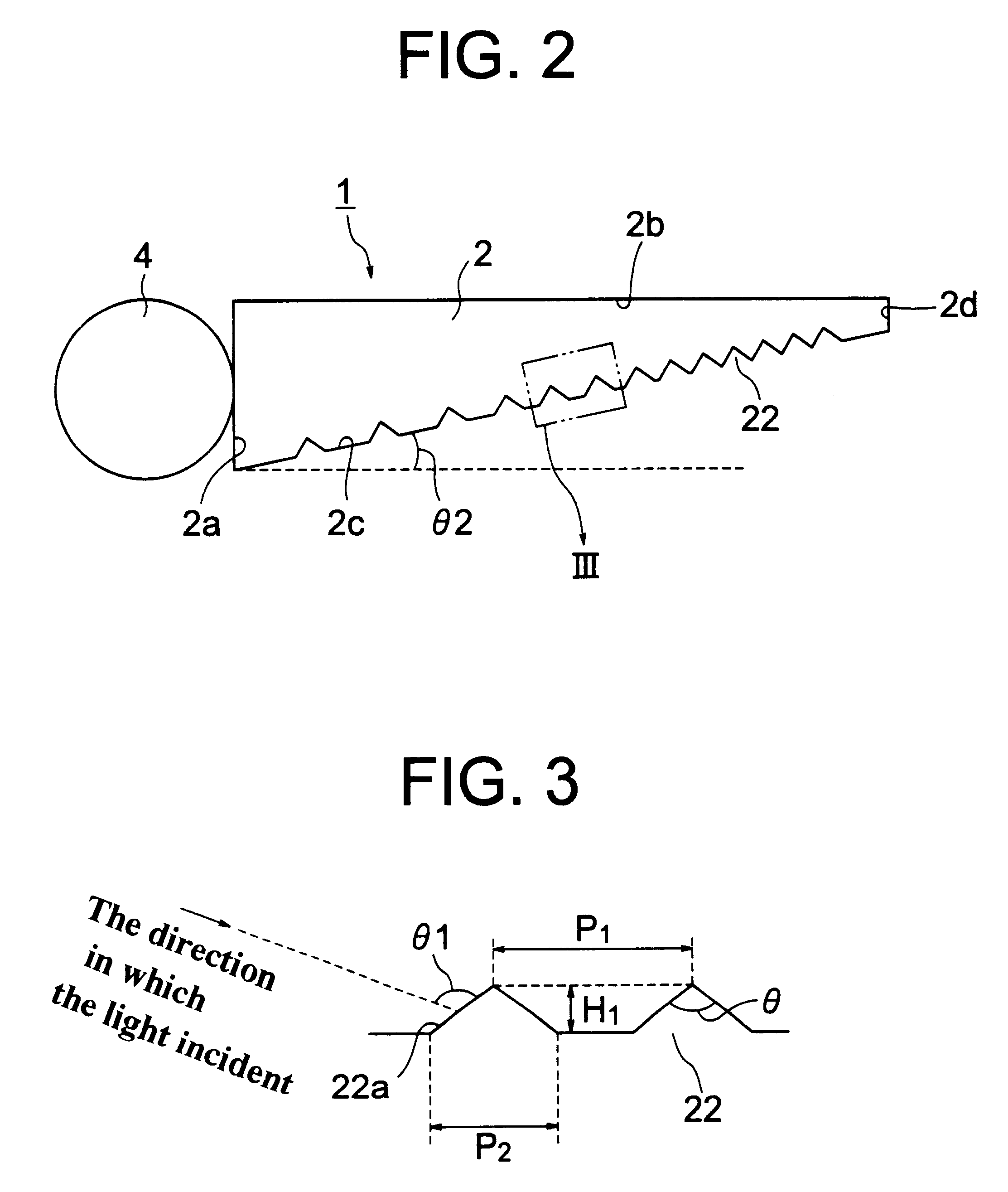Light guide plate with alicyclic resin
- Summary
- Abstract
- Description
- Claims
- Application Information
AI Technical Summary
Benefits of technology
Problems solved by technology
Method used
Image
Examples
production example 1
In a nitrogen atmosphere, 100 parts of 8-ethyltetracyclo[4.4.0.1.sup.2,5.1,10]-dodeca-3-ene (hereinafter, ETCD for short) was polymerized by a well known metathesis ring-opening polymer catalyst system, and then performed hydrogenation in a well known method to obtain ETCD ring opening polymer hydrogenates. The ring opening polymer hydrogenates had Mw of 42000, the hydrogenation ratio of 99.8% or more, a Tg of 140.degree. C., the water absorbent rate of 0.01% or less, the refractive index of 1.53 and an MFR of 19 g / 10 min.
With respect to 100 parts of the pellets, 0.2 parts of phenol-based anti-aging agent, pentaerythrityl-tetrakis(3-(3,5-di-tarsharybutyl-4-hydroxyphenyl)propionate) and 0.4 parts of hydrogenation styrene-butadiene-styrene-block copolymer (Tuftec H1051 (a crumb state) made by Asahi Chemical Industry Co.,Ltd. having a refractive index of 1.52 at 30.degree. C.) were blended, mixed by twin-roll mixer, and the strand (stick-shaped melting resin) was pelletized by a strand...
production example 2
An ETCD / DCP ring opening copolymer hydrogenates was obtained in the same way as in the production example 1 excepting that the 100 parts of ETCD was replaced by 15 parts of ETCD and 85 parts (100 parts in total) of tricyclo[4.3.0.1.sup.2,5 ]deca-3,7-diene (dicyclopentadiene, hereinafter, referred to as DCP). The copolymerization ratio of the norbornenes in the polymer was calculated from the composition of residual norbornenes in the solution after polymerization (by gas chromatography method) and ETCD / DCP=15 / 85 was found, which was substantially equal to the charged composition. The ring opening co polymer hydrogenates had a Mw of 40000, the hydrogenation ratio of 99.8%, the Tg of 104.degree. C., the water absorbent rate of 0.01% or less, the refraction index was 1.53, and an MFR of 20 g / 10 min. The resin was subjected to the same processing as in the production example 1 and a molding material in pellets was obtained. A plate was molded from the pellets under the same conditions a...
example 1
A light guide plate was produced from the pellets of ETCD ring opening polymer hydrogenates produced in the production example 1 as a molding material by injection molding using a mold provided with V-shaped grooves in advance.
Molding conditions of the injection molding were that an injection molding machine made by a Toshiba Machine Co.,Ltd. production No. IS450, was used, a molding temperature was 110.degree. C., a cylinder temperature was 290.degree. C., a nozzle temperature was 260.degree. C., an injection pressure was 1000 kgf / cm.sup.2, a dwell pressure application was 800 kgf / cm.sup.2, a mold clamping force was 1200 kgf / cm.sup.2, an injection speed (corresponding to a screw proceeding speed) was 40 cm.sup.3 / s, a screw back pressure was 70 kgf / cm.sup.2, and a screw rotation rate was 30 rpm. The time from starting of filling to ending of filling to the mold was 1 second.
The obtained light guide plate was, as shown in FIG. 2, wedge-shaped wherein the thickness gradually became t...
PUM
 Login to View More
Login to View More Abstract
Description
Claims
Application Information
 Login to View More
Login to View More - R&D
- Intellectual Property
- Life Sciences
- Materials
- Tech Scout
- Unparalleled Data Quality
- Higher Quality Content
- 60% Fewer Hallucinations
Browse by: Latest US Patents, China's latest patents, Technical Efficacy Thesaurus, Application Domain, Technology Topic, Popular Technical Reports.
© 2025 PatSnap. All rights reserved.Legal|Privacy policy|Modern Slavery Act Transparency Statement|Sitemap|About US| Contact US: help@patsnap.com



